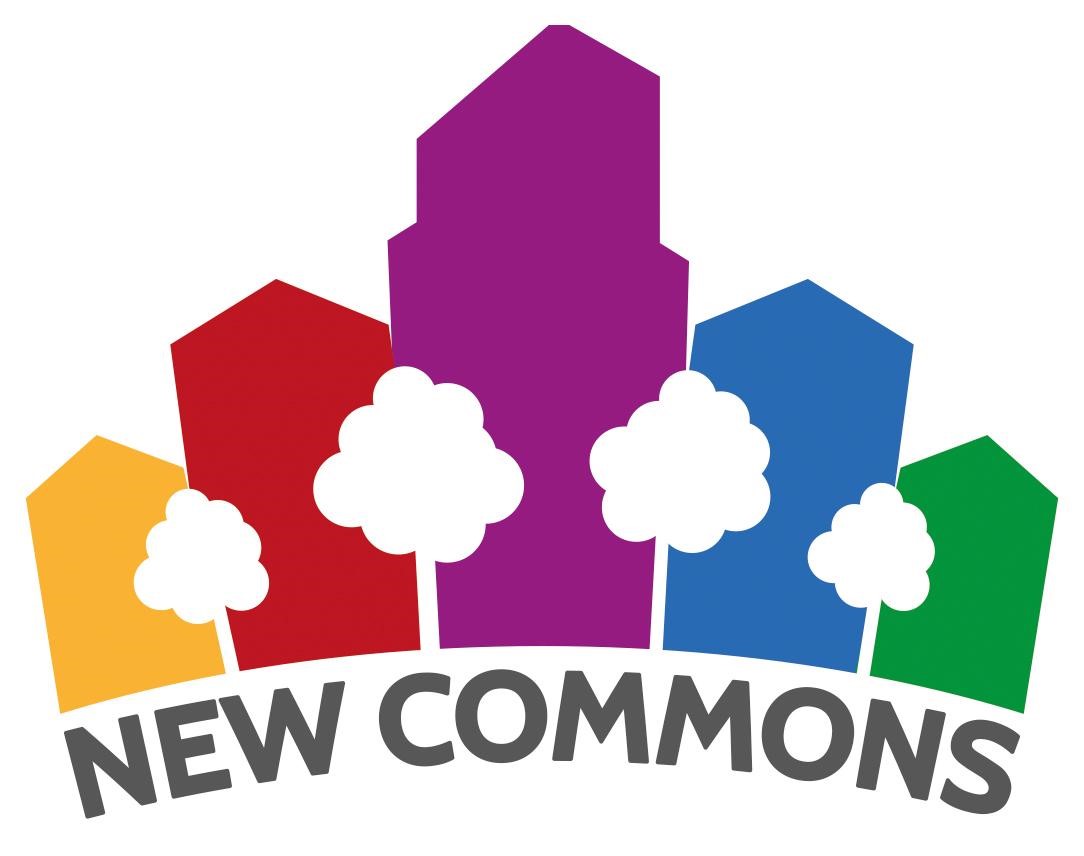
Objectives of the service
Within this study we are assessing the practicalities of collecting improved urban forestry data through the integration of satellite imagery and crowdsourcing. The growing awareness of urban forestry as a resource that should be managed and maintained has led to concerted efforts around the world to monitor urban trees. As a result datasets are being generated for many cities globally. Due to the cost and effort associated with their creation, urban forest datasets are often massively incomplete. Our services provide a platform for the continuous improvement of such datasets and increased public participation in the effort through a crowdsourced data component. Previous efforts to automate the collection of information on urban tree stock have focused almost exclusively on the use of canopy models applied to earth observation imagery. In order to improve the levels of information available, we combine active learning algorithms with automated tree identification models in order to direct crowd users to the areas where their contribution is needed most. Through a gamified data collection application they are able to capture detailed information on the ground without the need for expensive and time-consuming training. Our platform incorporates satellite imagery as well as satellite navigation in this integrated system.
Users and their needs
Our service targets the collection and analysis of urban forestry data for those organisations charged with the management of that resource while also performing an important public awareness and outreach function. This includes academic researchers, arborists, municipal authorities and NGO's.
User needs are being collected by means of surveys, interviews and meetings. Working relationships have also been developed with significant support partners in Sweden and Ireland.
Overview of user needs
- There is a need for inventories that are more completely and uniformly populated and refreshed on a continuous basis so that monitoring can be performed on criteria such as species diversity and stock vitality.
- There is a requirement to engage the general public in the management of urban tree stock given its position within ecosystems that span jurisdictional boundaries.
- There is a need amongst researchers for information on how trees respond to changes in the urban environment.
- There is a need amongst managing authorities for information on how urban trees affect their surroundings, including interaction with infrastructure and environmental contributions.
- There is a need amongst all urban forestry stakeholders for more “bottom-up” information on trees through increased levels of in-the-field data collection.
Primary support relationships exist with partners in Sweden and Ireland.
Service/ system concept
The system allows users to examine inventory information on urban trees through an online mapping portal. Analytics tools will facilitate change monitoring in urban forest stock and high-level understanding of stock vitality and diversity. The system also supports the remote inspection of individual trees through information drawn from multiple datasets and crowdsourced from the field.
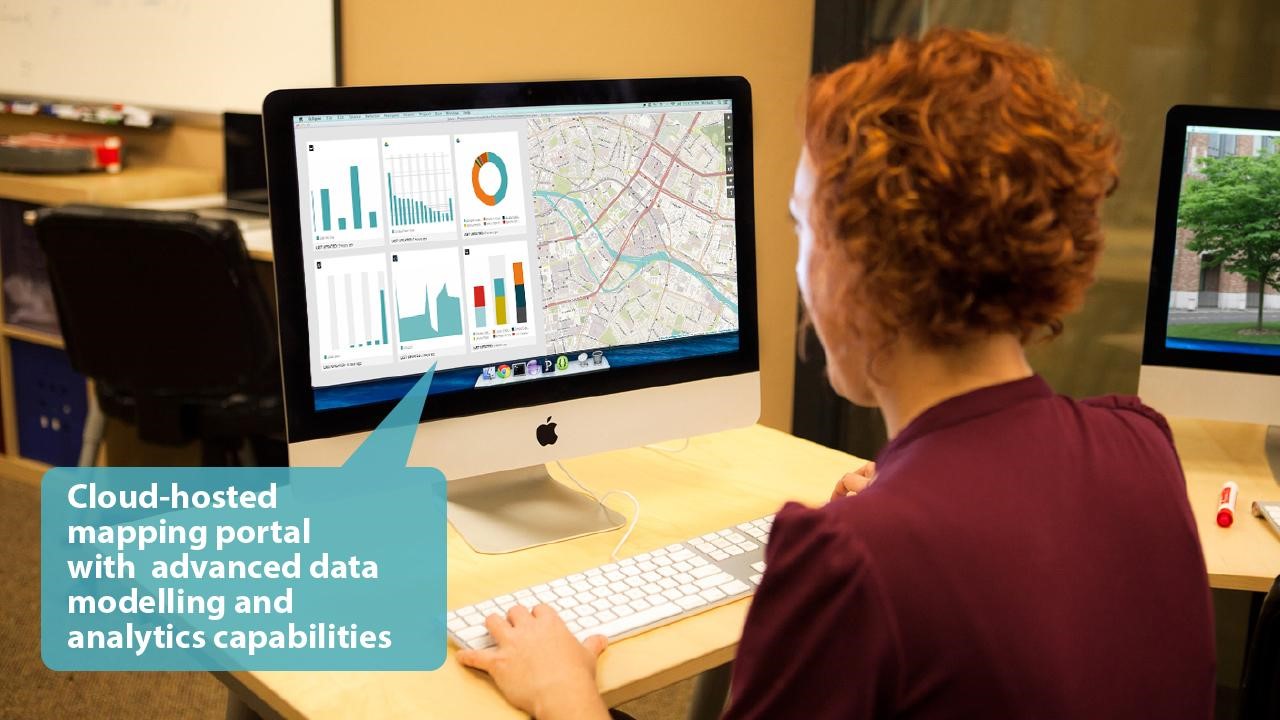
By applying standard definitions to the presentation of information, the system can support direct comparisons of information between datasets generated by different sources and in different locations.
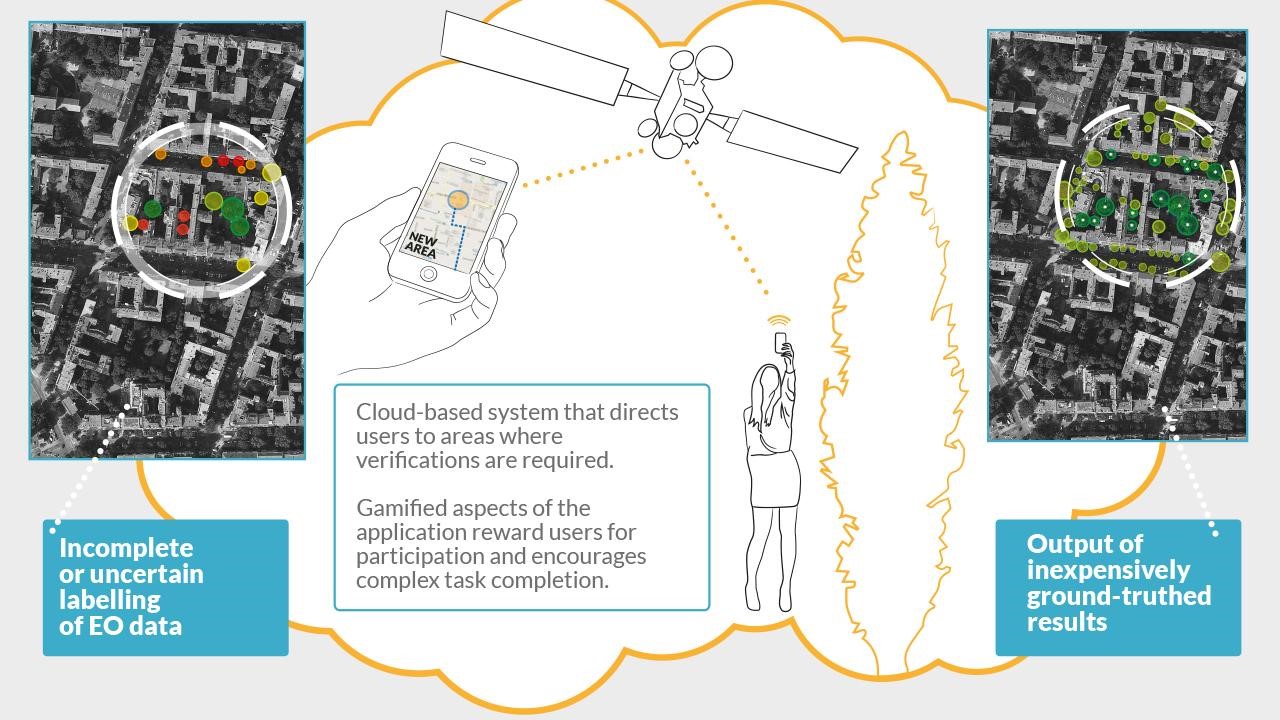
The mobile application allows distributed users to locate and identify new trees or trees of particular interest. They can report and update information as to tree vitality, potential hazards, interference with infrastructure, etc. By gamifying the crowdsourcing experience, user engagement can be better encouraged and sustained and the sense of community contribution reinforced.
Space Added Value
Our system improves the levels of completion and the temporal resolution of urban tree inventories. Taking satellite imagery of urban areas, the system runs canopy and tree identification models in order to identify objects likely to be trees. At its simplest level, it assigns a probability against the likelihood of each of these objects being trees.
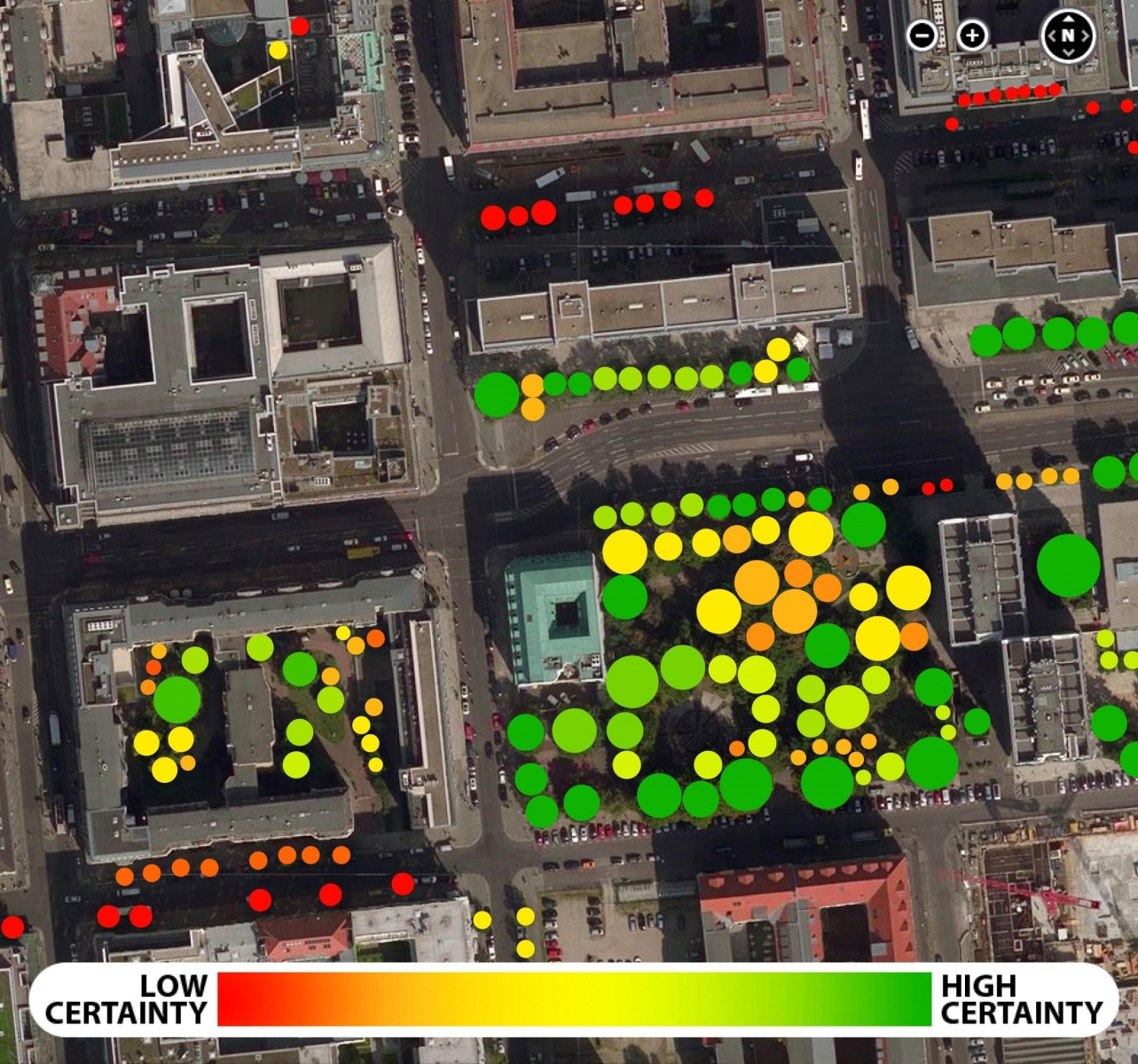
In the field, crowdsourced information is gathered through a mobile application. Based on our analysis of satellite imagery crowdsourcing users are directed, with the aid of satellite navigation, to areas where their data collection efforts are most useful to the system and service as a whole.
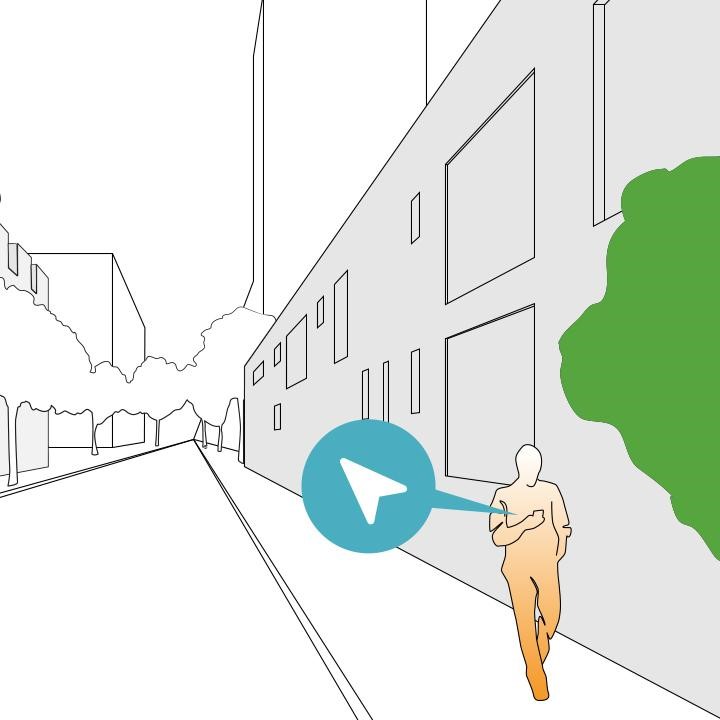
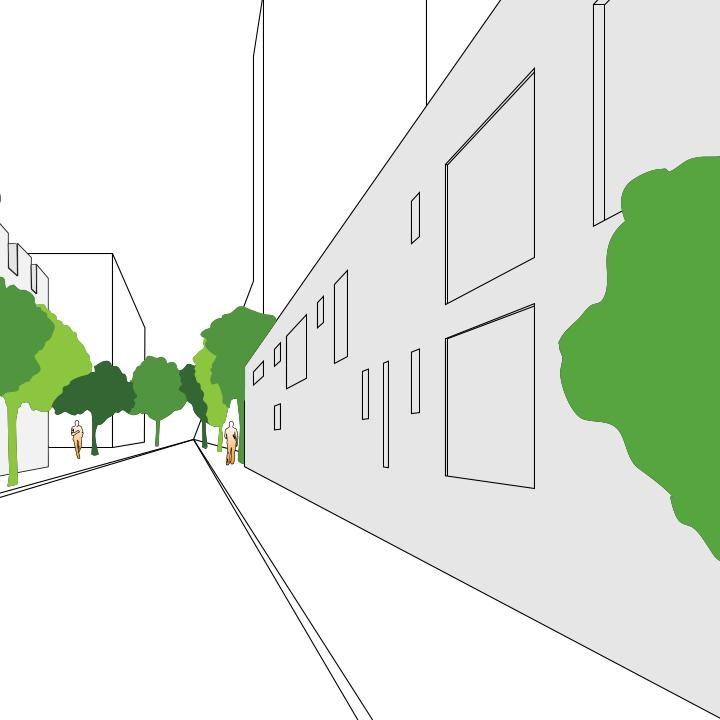
Newly input data improves the image recognition patterns, enabling the system to rerun with improved accuracy its object identification algorithms.
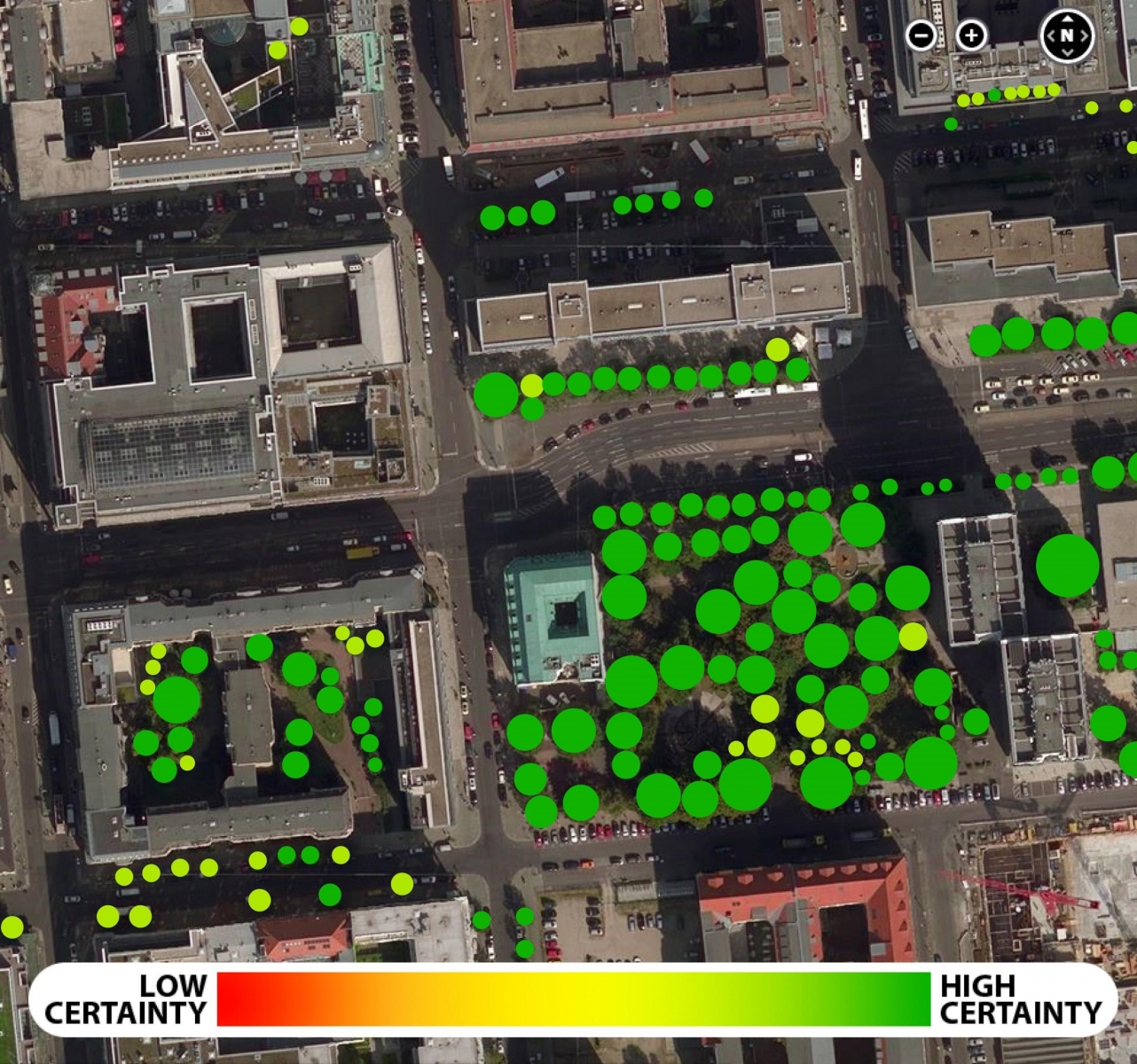
The generated datasets are then spatially presented through an online mapping portal with associated change monitoring and analytics tools.
Current Status
The feasibility study portion of this project began in mid June 2015 and ran until December 2015.
The objectives of the study were to assess the technical and commercial viability of a service directed at the urban forestry sector and to describe and define that service in response to researched user needs. Key components of the assessment were the evaluation of the service enhancements that could be offered through the integration of EO satellite imagery and GNSS as well as crowdsourcing and Open Data.
This was done under the following principal areas
1. User and Stakeholder Analysis and Consolidated User Requirements
2. Definition of the Integrated Solution and Associated Services
3. Economic and non-economic assessments including market viability analysis
The final review was held on December 15th 2015. The outcomes of the project were well received and the objectives considered to be met.
Preparations are being made for a follow-on IAP demonstration project.



